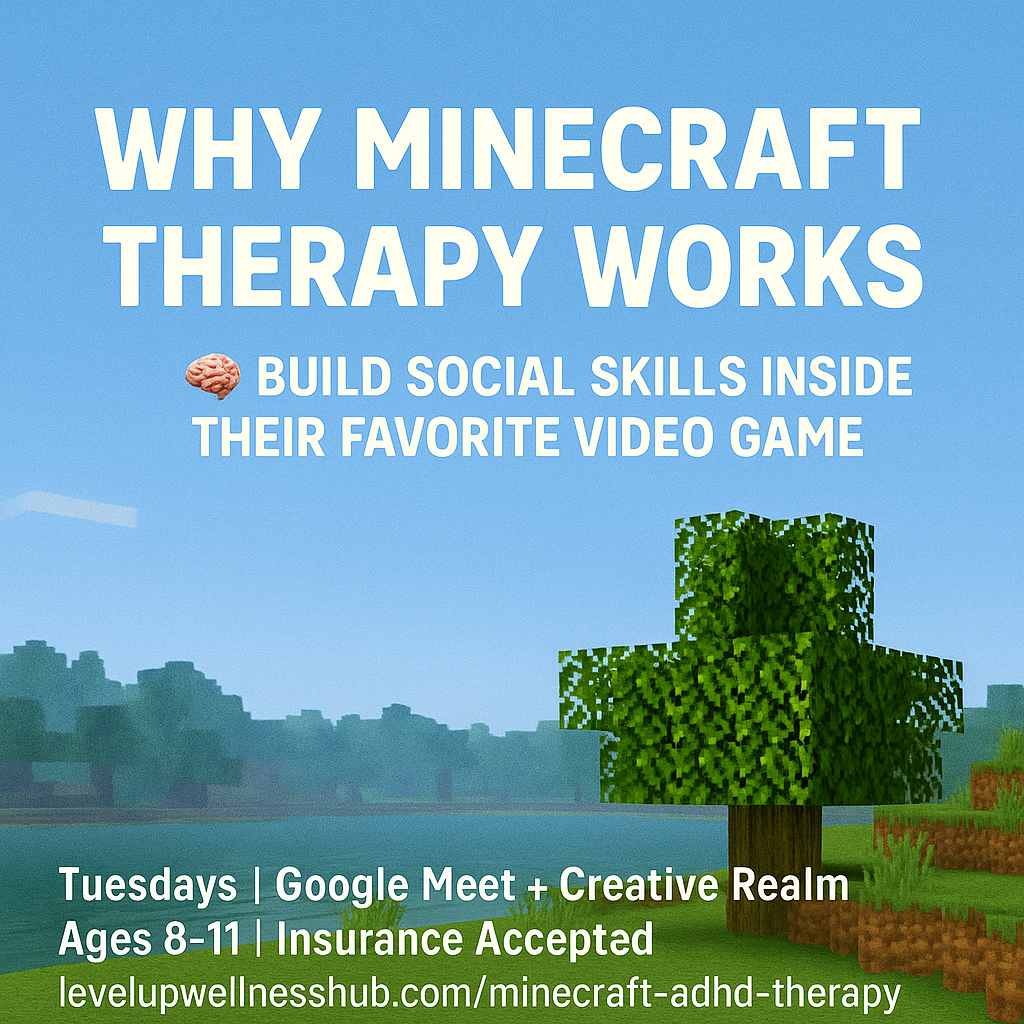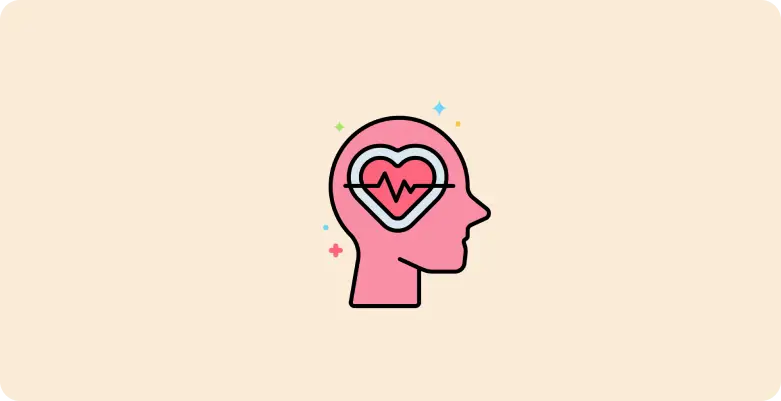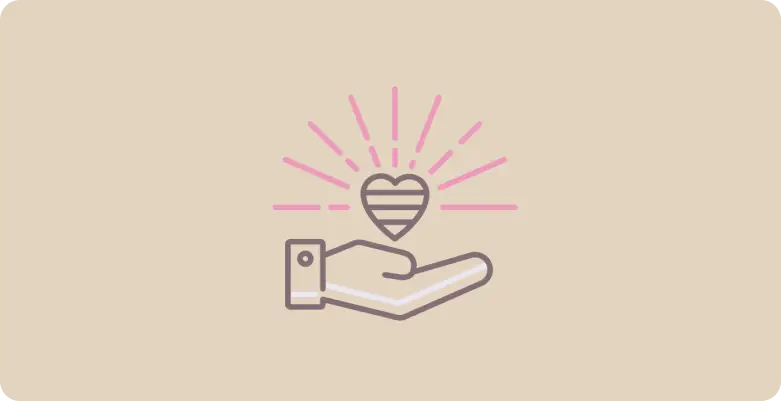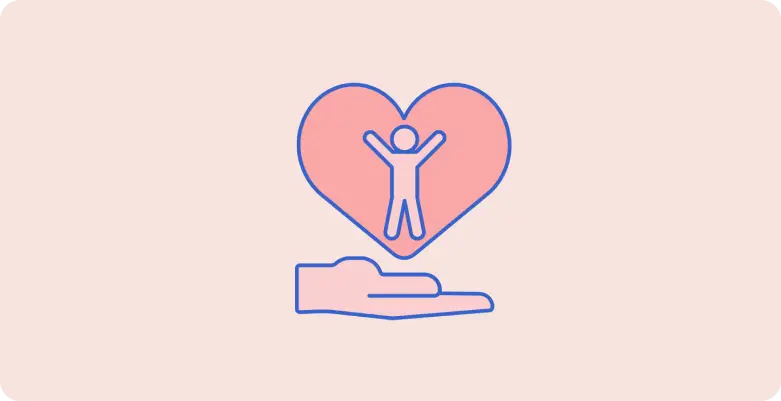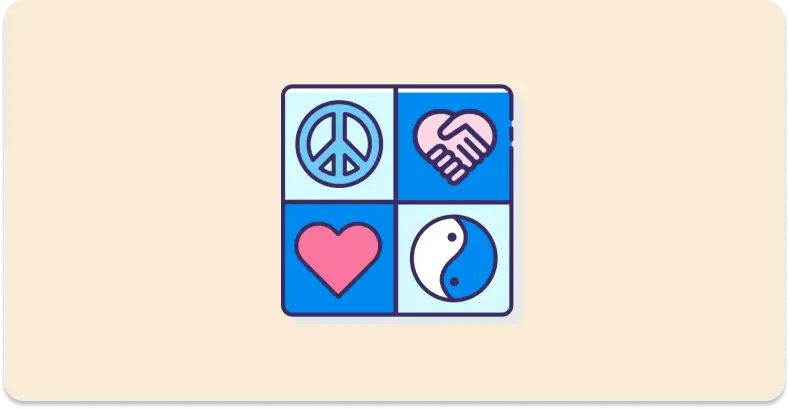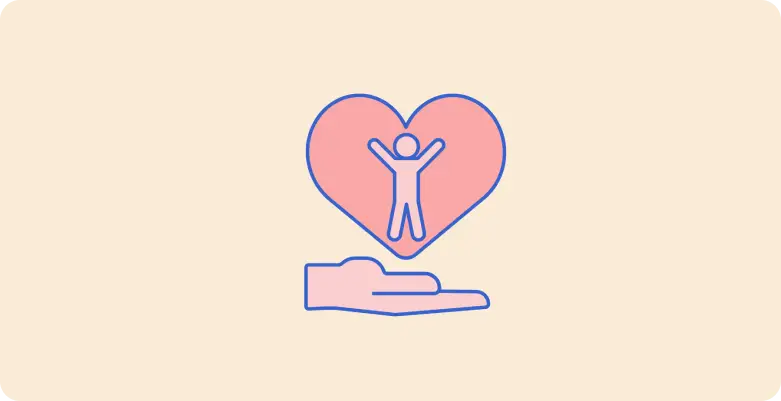ADHD Resources: Tips, Strategies, and Tools for Managing ADHD at Any Age

Hi, I'm Victoria!
Welcome! I’m so glad you’re here. I’m Victoria, a licensed professional counselor, creative arts therapist, ADHD Certified Clinical Services Provider and Special Educator with over 15 years of experience supporting individuals on their journeys towards healing and growth.
Recent Post
When Negative Thinking Becomes Your Default Setting
We all experience negative thoughts from time to time. But when those thoughts repeat often enough, they stop being occasional and start becoming automatic. Before long, negative thinking turns into a habit—a background process shaping how you see yourself, how you talk to yourself, and what you believe you’re capable of.
For many people with ADHD, that shift starts in late childhood. For women navigating perimenopause or menopause, it can resurface later in life. And in both cases, it’s rarely about “not trying hard enough”—it’s about years of internalized messaging that reshape how we view our worth.
The ADHD Connection: How Self-Esteem Starts to Decline
By around late elementary years (roughly age 9–11), many children with ADHD have already absorbed repeated messages like “not trying hard enough,” “always in trouble,” or “too distracted.” Over time, those moments add up and can shape a lower sense of self-worth compared with peers. Research consistently finds that children and adolescents with ADHD report lower self-concept/self-esteem than comparison groups, highlighting the toll of chronic criticism and mismatch with expectations. PMC+1
Because kids are wired to seek connection and approval, many develop people-pleasing behaviors as a coping mechanism—over-apologizing, hiding mistakes, and trying to prove their worth to stay safe from further criticism. Internalizing pathways (anxiety, self-criticism) are a known source of impairment in ADHD and help explain why these patterns stick. PMC
The Midlife Parallel: When Old Narratives Reappear
Fast forward a few decades. You’re an adult woman navigating perimenopause or menopause, and familiar patterns pop back up. When brain fog, forgetfulness, and attention glitches collide with work or partner expectations, the old story replays: “I’m dropping the ball. I’m not enough.” Clinical reviews show perimenopause is linked to difficulties in verbal memory, attention, processing speed, and working memory—changes that can compound ADHD symptoms and self-doubt. PMC
That critical voice feels new—but your brain has heard it before.
Why This Pattern Feels So Familiar
Whether you’re 10 years old being told to “try harder,” or 45 and hearing you’re “not as focused,” the message lands the same: “You’re not meeting expectations.” Your brain wires repeated experiences together, and eventually they become your unconscious baseline.
This is also why some individuals with ADHD experience rejection sensitivity—intense emotional pain around real or perceived criticism—which can drive people-pleasing and over-compensation. It’s a protective strategy, not a personal failing. Cleveland Clinic
Rewriting the Narrative
The good news? Thought patterns are learned—which means they can be unlearned.
Try these prompts when you notice the old script playing:
- “Whose voice am I hearing right now?”
- “Would I speak this way to someone I care about?”
- “What evidence supports a kinder, more accurate interpretation?”
Reframing won’t erase ADHD or hormonal shifts, but it returns control over your inner story. Replace criticism with curiosity. Replace shame with self-compassion. Redefine “doing it differently” as doing it intentionally.
You don’t have to prove your worth to be worthy.
References
- Houck, G. (2010). Self-concept in children and adolescents with ADHD. Journal of Pediatric Nursing. Evidence of lower self-concept among youth with ADHD compared with peers. PMC
- Betancourt, J. L., et al. (2024). Self-esteem in children and adolescents with and without ADHD: A systematic review and meta-analysis. Clinical Psychology Review. Synthesizes lower self-esteem and trajectories across development. ScienceDirect
- Metcalf, C. A., et al. (2023). Cognitive problems in perimenopause: A review of recent findings. Menopause. Links perimenopause with deficits in verbal memory, attention, processing speed, and working memory. PMC
- Bethune, S. C., et al. (2022). The impact of internalizing symptoms on impairment for children with ADHD. Journal of Attention Disorders. Internalizing pathways (e.g., self-criticism/anxiety) contribute to functional impairment. PMC
- Cleveland Clinic (2022). Rejection Sensitive Dysphoria (RSD): Symptoms & Treatment. Patient-friendly overview connecting ADHD and rejection sensitivity.
Menopause as a Time of Growth, Strength, and Renewal
Menopause doesn’t have to be a time where everything feels like it’s falling apart. For many women, it can be a powerful invitation to pause, re-evaluate, and create a day-to-day life that finally aligns with their most authentic selves.
That version of you—the one who may have gotten lost in the hustle and bustle of everyday life, in motherhood, in climbing the career ladder, or in supporting a partner—deserves space to reemerge. Menopause can be a season of growth, opportunity, joy, health, strength, empowerment, and so much more.
And if you’re also living with ADHD, these shifts can feel even more intense. Hormonal changes during perimenopause and menopause can magnify ADHD symptoms like brain fog, emotional sensitivity, and memory lapses. But with the right tools and vision, this season can also become a time of clarity and empowerment.
Why Menopause Can Be an Empowering Time
This stage of life can also be deeply introspective. It’s a chance to reflect and get clear on who you are today and what matters most to you moving forward. It’s an opportunity to let go of what no longer serves you and intentionally create space for what does.
As the years go by, many women forget to check in with themselves. We get so focused on external responsibilities that we rarely stop to ask: What do I really want for myself? What do I need most in this season of life?
Menopause—and especially menopause with ADHD—can be the perfect time to return to these fundamental questions.
What Is a Menopause Vision Statement?
One way to do this is by creating a Menopause Vision Statement.
A vision statement is a simple but powerful way to get clear on your values and goals during menopause. It becomes your north star—a personal guide to help you navigate changes, make decisions, and focus your energy on what truly matters.
Your Menopause Vision Statement is unique to you. Some examples might look like this:
- “In my life, thriving during menopause means getting to compete in triathlons, play with my grandkids, and enjoy a variety of foods with the people I love.”
- “Thriving during menopause means spending as much time as possible with my family, tending to my beautiful garden, and being strong enough to do a push-up.”
- “If I’m thriving during menopause, then I feel alive and joyful; I spend my time hiking outside with my friends; I practice gratitude to nourish my body and soul; and I make sure to prioritize sleep and protein for my health and fitness.”
This kind of vision does more than just reframe menopause as positive—it also helps you and your coach build a personalized plan that supports thriving.
How the Vision Statement Shapes Coaching
Let’s take the example Vision Statement:
“Thriving during menopause means getting to compete in triathlons, play with my grandkids, and enjoy a variety of foods with the people I love.”
With this in mind, your coaching program might include:
- Eating balanced meals that fuel training without unnecessary restrictions.
- Prioritizing endurance workouts with some strength training to support muscle and bone health.
- Building sleep strategies to ensure energy for both training and playing with grandchildren.
For women with ADHD, coaching may also involve skill-building to strengthen time management, reduce anxiety, and find new systems when old ones stop working. This can mean externalizing memory, reframing rest as fuel, and practicing emotional regulation tools that align with your vision.
Using Your Vision to Make Choices
The Menopause Vision Statement can also help you evaluate daily behaviors. For example, let’s say you wonder if cutting back on alcohol would help.
Through the lens of your Vision Statement, the decision becomes clearer:
- If training and staying energized matter most, you might cut back because alcohol leaves you tired and less active.
- If a thriving social life is more aligned with your vision, then enjoying wine tastings and dinners with loved ones might stay a priority, and you may choose to adjust elsewhere.
There’s no “right” or “wrong” choice—just the one that aligns best with your vision.
Menopause, ADHD, and the Power of New Tools
When you approach menopause with ADHD, the changes can feel disorienting. Old tools may stop working, and anxiety often increases as routines unravel. But this doesn’t mean you’ve failed—it means it’s time to build new supports that work with your new brain and body.
Skill-building strategies might include:
- Externalizing memory with planners and reminders
- Breaking tasks into smaller steps to reduce overwhelm
- Developing time management systems that fit this stage of life
- Exploring whether ADHD medication, HRT (Hormone Replacement Therapy), or a combination might help reduce symptoms
- Practicing anxiety reduction through grounding, journaling, or therapy
These strategies aren’t just “nice to haves”—they are survival tools that create resilience and relief.
A New Chapter of Empowerment
When you approach menopause this way, it becomes more than a phase to endure—it becomes a chapter of empowerment. A time to rediscover yourself, honor your values, and create systems that help you thrive with strength, joy, and clarity.
✨ Ready to create your Menopause Vision Statement? Work with Victoria Prisco—Licensed Therapist, ADHD Specialist, and Menopause Coach—to uncover what thriving in this season looks like for you. Together, we’ll design strategies to help you move through menopause with purpose, balance, and confidence.
📅 Book a session today: levelupwellnesshub.com
ADHD and Perimenopause: Why You Might Feel Like You’re “Losing Your Mind”
So many women share the same story:
“I feel like I’m falling apart. I’ve always managed, even if it was hard… but now I can’t keep it together.”
For women who were never diagnosed with ADHD, perimenopause or menopause often becomes the breaking point where the puzzle pieces finally click. Looking back, you may recognize signs were there all along—forgetfulness, restlessness, procrastination, big emotions—but you masked, coped, and pushed through.
Now, with hormones shifting, those old strategies stop working. Everything feels heavier.
The Hidden Cost of Hyper-Independence
- You don’t ask for help, even when you’re drowning—because needing support feels like failure.
- You constantly prove you can handle it—even when exhausted—fearing people might leave or respect you less if you don’t.
- You feel more shame when you rest than when you overwork, because you were always praised for pushing through—even when it broke you.
- You equate asking for support with being a burden. You’d rather struggle in silence than risk “putting on” someone else.
- You only feel safe when you’re fully in control, because letting go feels too vulnerable, too dangerous.
Hyper-independence often looks like a personality trait. But for many neurodivergent women, it’s a survival pattern—one that gets praised but quietly burns you out.
Why ADHD Feels Different in Perimenopause
Stimulants alone often don’t fix it, because this isn’t just ADHD anymore. During perimenopause and menopause, hormones that play a major role in brain function—especially estrogen and progesterone—fluctuate and decline.
- Estrogen regulates dopamine and serotonin, the brain chemicals tied to attention, motivation, and mood. When estrogen drops, dopamine signaling weakens, which intensifies ADHD symptoms like distractibility, brain fog, and forgetfulness. Serotonin also dips, leading to mood swings, irritability, and anxiety.
- Progesterone has a calming effect on the nervous system, supporting emotional balance and stress regulation. Lower progesterone means you’re more likely to feel overstimulated and less able to recover from stress.
- Oxytocin, the bonding and connection hormone, also tends to decrease. This can lead to feelings of loneliness, disconnection, or rejection sensitivity.
When these hormones fluctuate or decline, your brain’s usual ADHD challenges get magnified. Tasks you used to “push through” suddenly feel impossible, and your emotional responses may feel bigger, faster, and harder to regulate.
Common Perimenopause + ADHD Symptoms
- Brain Fog → ↓ Estrogen (harder to focus, organize thoughts, or recall information)
- Mood Swings → ↓ Estrogen + ↓ Progesterone (sudden shifts from calm to anxious, sad, or irritable)
- Irritability / Anger Outbursts → ↓ Estrogen (shorter fuse, quicker to react)
- Reduced Stress Tolerance → ↓ Estrogen + ↓ Progesterone (little things feel overwhelming, harder to recover from setbacks)
- Memory Lapses (“Why did I walk into this room?” moments) → ↓ Estrogen (weaker short-term recall and working memory)
- Emotional Sensitivity → Estrogen Fluctuations (feeling easily hurt or reactive to small triggers)
- Crying Spells / Tearfulness → Estrogen Fluctuations (tears come quickly, often without clear reason)
- Increased Sensitivity to Rejection / Criticism → ↓ Estrogen + ↓ Progesterone (heightened rejection sensitivity, classic in ADHD, becomes even sharper)
- Feelings of Isolation or Loneliness → ↓ Estrogen + ↓ Oxytocin (reduced sense of connection, even with loved ones)
- Difficulty Making Decisions → ↓ Estrogen + ↓ Dopamine (harder to weigh options, more second-guessing, mental “stuckness”)
The combination of ADHD and perimenopausal hormone shifts can feel like your brain is working against you. It’s not that you’re failing—it’s that your brain chemistry has fundamentally changed.
What Helps Instead
When ADHD meets perimenopause, the old tools you relied on may not feel strong enough. This is where combining skill-building with hormone support makes a real difference.
1. Skill-Building for the ADHD Brain
- Use planners, reminders, and visual cues to externalize memory
- Break tasks into smaller steps to reduce overwhelm
- Reframe rest as brain fuel, not laziness
- Delegate responsibilities instead of carrying everything alone
- Practice grounding and journaling for emotional regulation
2. Hormone-Specific Supports
- HRT (Hormone Replacement Therapy): Restoring estrogen and/or progesterone may reduce brain fog, mood swings, and sleep problems
- Estrogen-friendly nutrition: Flaxseed, soy, and chickpeas may support balance
- Exercise: Movement boosts dopamine and serotonin, offsetting dips
- Sleep hygiene: Protects memory, focus, and mood stability
- Stress reduction: Yoga, meditation, or walking lowers cortisol
3. Community & Connection
- Talk openly: silence fuels shame; connection reduces it
- Seek ADHD-informed therapy: find a provider who understands hormones + neurodivergence
- Peer support: remind yourself you’re not alone—this is a shared experience for many
✨ The bottom line: Perimenopause doesn’t erase your competence—it shines a light on how much you’ve been carrying. With hormone-aware strategies, support, and new skills, you can rebuild confidence and create systems that work for this version of your brain.
ADHD Time Management Strategies: Why Time Blindness Matters and What Actually Works
When most people think about ADHD time management, they imagine color-coded planners, cube timers, or productivity apps. But for ADHD brains, those tools often fail to solve the real issue. That’s because ADHD time management struggles aren’t just about the clock—they’re about time blindness.
What Is ADHD Time Blindness?
ADHD is neurological, meaning it impacts how the brain functions and perceives the world. One of the most overlooked aspects of ADHD is time blindness—the difficulty in accurately sensing or estimating time.
This difference explains why so many people with ADHD say:
- “It feels like this will take forever.”
- “I thought I had more time!”
Overestimating vs. Underestimating Time
Time blindness can show up in two big ways:
- Overestimating time:
You believe a task will take two hours, so you avoid it because you don’t have two hours free. Later, you finally do it and realize it only took ten minutes. - Underestimating time:
You think you can get ready in 20 minutes, but it really takes 35. That makes you late, anxious, and scrambling—often forgetting things like your lunch on the way out the door.
These patterns aren’t about laziness. They’re about how ADHD brains process time differently.
Why Emotions Are at the Core of ADHD Time Management
For ADHD, the challenge isn’t just about minutes and hours. It’s about the emotions tied to tasks. Avoidance often comes from feelings such as:
- Anxiety
- Overwhelm
- Self-doubt
- Frustration
These feelings make a five-minute email feel like a two-hour mountain. Without strategies, the cycle repeats: procrastinate → panic → rush → shame.
ADHD Time Management Strategy: Timing Yourself
One of the most effective ADHD time management strategies is simple: time yourself.
By tracking how long tasks actually take, you create data your brain can trust. This helps you:
- See that a dreaded task only takes 10 minutes, not 2 hours.
- Realize that your morning routine consistently takes 35 minutes, not 20.
- Plan your day more realistically.
- Reduce the overwhelm that leads to avoidance.
Timing yourself bridges the gap between how long things feel like they’ll take and how long they actually take.
Building a Day That Works for ADHD Brains
Once you understand your personal timing, you can:
- Block off realistic chunks of your day.
- Reduce the stress of being late or unprepared.
- Build confidence by completing tasks without burnout.
This isn’t about “trying harder.” It’s about working with your brain instead of against it.
Moving Beyond Shame
If you’ve been telling yourself that you just need more discipline, you’re not giving yourself enough credit. ADHD isn’t about effort. It’s about learning tools that are designed for the way your brain processes time and emotions.
Learn ADHD Strategies with Victoria
I specialize in helping people move past frustration and build ADHD time management strategies that actually work. Together, we’ll create systems that support your focus, reduce overwhelm, and help you feel more in control of your time.
🌐 Ready to get started? Visit levelupwellnesshub.com to meet with me and learn ADHD-friendly strategies that help you thrive.

